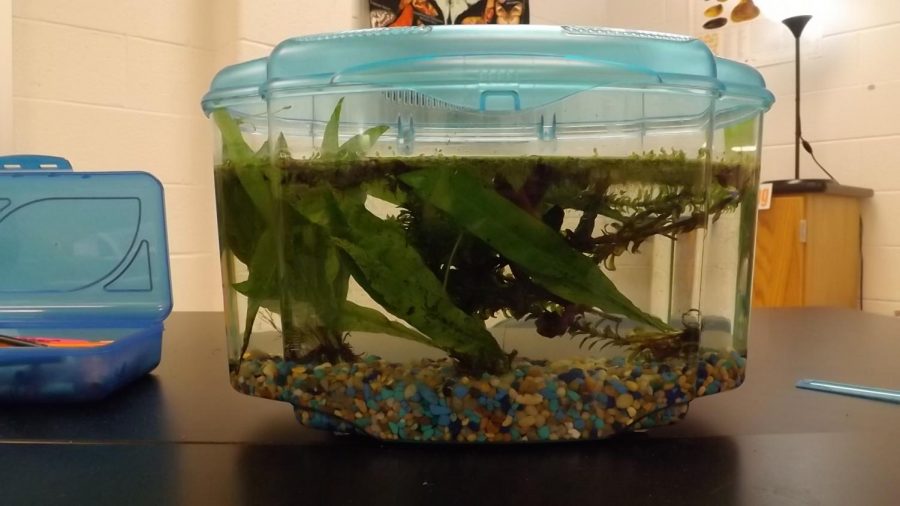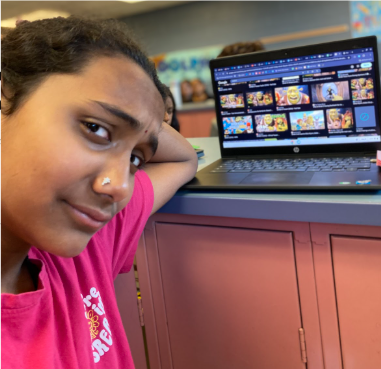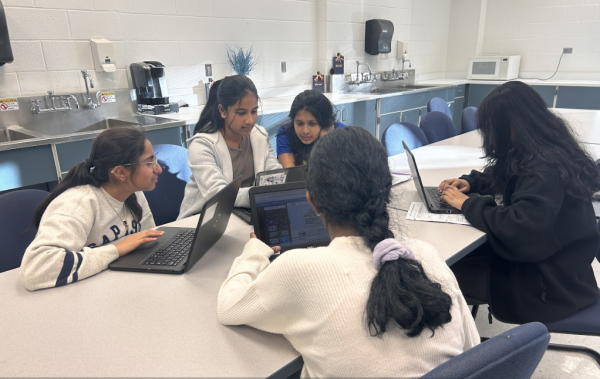Seventh-graders take care of aquariums in science class
Plants in the aquariums include elodea, duckweed, and salvinia.
The FCPS science curriculum has seventh-graders learning about wild aquatic ecosystems and the importance of water quality by giving the students aquariums filled with various organisms.
Teachers are giving their students fish, snails, various plants, and possibly fiddler crabs because the teachers believe that students would benefit more if they learned how to care for more than one type of creature and, in total, an aquatic life cycle.
“They will have a better understanding of what an ecosystem is and a greater understanding of water quality and how humans benefit from this,” Ms. Sharma said. “Whatever we do on land has an impact on water quality.”

Guppies and snails last a very long time when cared for properly. The school purchases extra organisms in case they need to replace any. Mrs. Jones Howard and Ms. Sharma shared their most successful aquariums. A 5-year-old guppy(still living) and a 4-year-old algae eater that got up to a foot long.
According to various teachers, the purpose of learning about the aquariums is for real-world experience — it helps students learn how to take care of an ecosystem that you would find in the wild, either living or nonliving. Most students love using equipment and doing hands-on experiments can help engage the students with their lesson.
In the unit, students will learn of the ecological organization, abiotic and biotic factors, and the food web/chain.
About the Tanks
This year, each classroom has eight tanks for all of those teachers’ periods,with one at each table for everyone to share. Compared to previous years this is a lot less work. Mrs. Oliver used to have one per table for each class, meaning a lot of fish tanks to take care of and clean.
Most teachers usually order more fish than necessary in case any organisms die. They store the extra plants and animals in a 10-gallon tank that is taken care of by a teacher.
Caring for the Aquariums
The students will take tests to see if the tank water needs to be changed. If tank water isn’t changed every now and then, the organisms could be affected. The students take nitrogen tests, temperature tests, dissolved oxygen tests, and more.
The nitrogen test is fairly important. If the nitrogen level is too high, the fish could die. If the nitrogen level is too low, the same outcome would occur. The lowest level of nitrogen in water is 0. That is equivalent to battery acid. The highest level is 14, which is equal to household bleach or sodium hydroxide. The normal level of nitrogen that should be in the water for freshwater organisms is 6.
If a group is not taking good care of their tank, they will get a warning and will be told how to correctly do it. Mrs. Jones Howard said, “The importance of taking care of the aquarium is just as important as taking care of a pet. Would you neglect taking care of your pet at home?”
Another concern is the reliability of students, especially after all of the vandalism going around. This is an important learning unit so teachers want the students to have a good time as they care for the creatures.
Ms. Sharma adds, “Teachers in general are always monitoring the fish tanks anyways, and since there are multiple groups taking care of the fish, there is a low chance that will happen. But if a group is being negligent and aren’t doing their part, we have to remind them of the safety contract, and we might have to take away that privilege because they aren’t being responsible or safe.”.
When the school year ends, and the aquariums are no longer needed, teachers keep their fish after the school year to let them grow. Some teachers have holding tanks in their classrooms. If the fish in the tanks reproduce, they will be used the following year in the aquariums. It saves money for the school so that they can use it on other things.
This unit ends with a field trip to Cub Run. This is called the Meaningful Watershed Educational Experience, or MWEE. The purpose is to engage the students in learning and caring for watersheds. Each team will travel together and will get to go into a stream to test the water quality and learn about the ecosystem.









